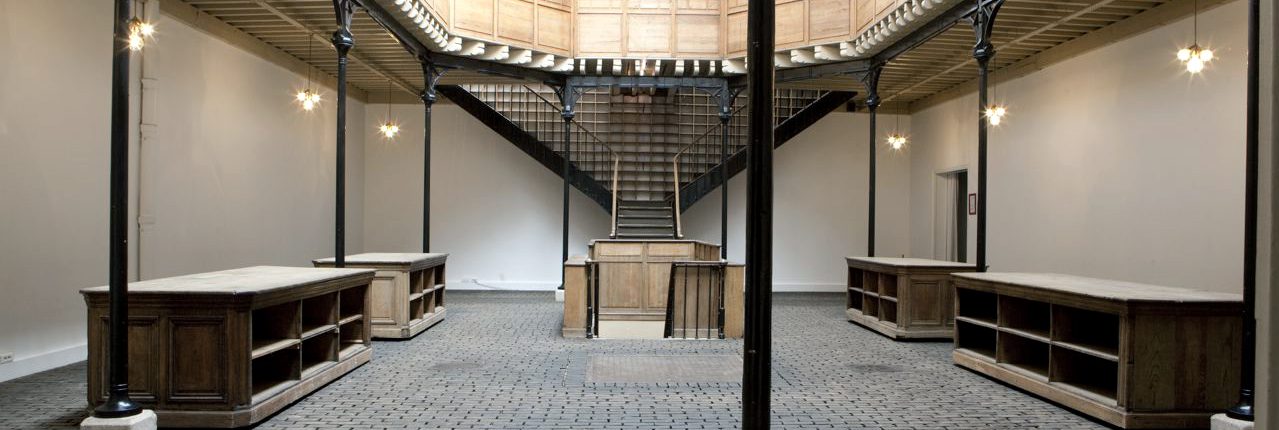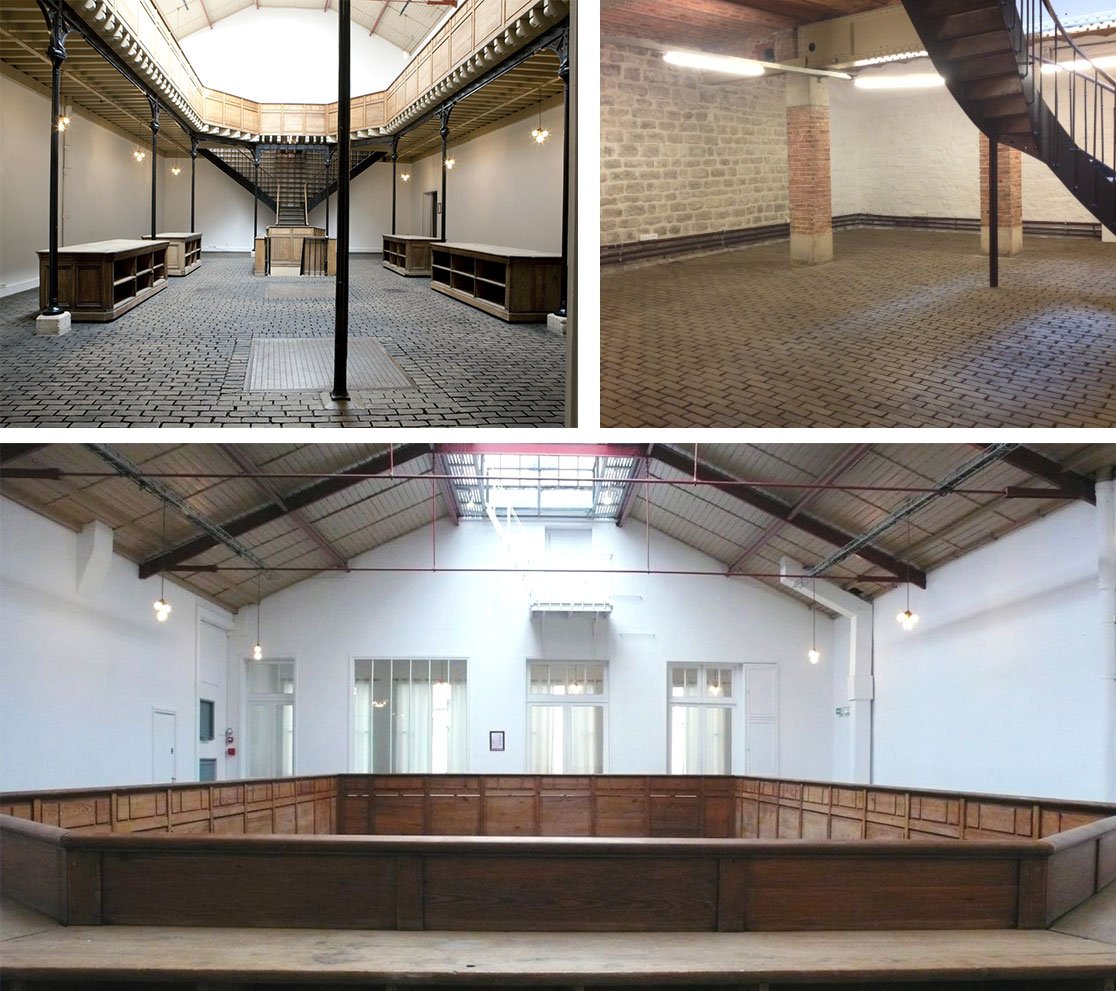BASTILLE DESIGN CENTER
A BRIEF HISTORY
When it was built in the middle of the 19th century, the Bastille Design Center (located on Boulevard Richard Lenoir in the 11th arrondissement of Paris) was a hardware store until 2005. The Bastille Design Center was host to the same activity for 150 years, and its architectural features have not changed. Going there and exhibiting makes one enter another era.
A true showcase for SOON PARIS, this three-level space allows everyone to travel through 19th-century Paris:
- The ground floor has a large main room as well as smaller ones and a garage where the stables used to be. Initially, the large room was the main room of the hardware store and the two small rooms were bedrooms. Another room served as a kitchen.
- The first level forms a passageway from which one can see the entire ground floor and the partly glass roofing for a skylit exhibition space. The company’s founder used to live on the building’s first level.
- The lower level is supported by lattice girders with vaults.
The floors on the ground and lower levels consist of small strips of wood (8cm thick, 8cm wide and 15cm long) while the upper level and the two rooms by the entrance have parquet flooring. The building is situated along the Canal Saint-Martin. Merchandise arrived on barges pulled by horses, and was taken to the building by cart, for which the rails can still be seen today.
THE CANAL SAINT-MARTIN
1805 – 1925:
The canal’s construction began in 1805 pursuant to the Law of 29 Floréal, but works weren’t entirely completed until 1925.
after 1859:
The prefect Haussmann wanted to build the Boulevard de Prince Eugène (today Boulevard Voltaire) which cuts across the Canal Saint-Martin. One would have needed a movable bridge to cross it. Eugène Belgrand suggested relocating the Bastille sluice gates 2 km upstream to lower the canal’s level by approximately 5 meters at the boulevard, allowing it to be crossed by a fixed bridge.
1860 – 1862:
Rebuilding of the sluices at the level of Rue du Faubourg-du-Temple.
Deepening the canal created a trench through Paris. The prefect Haussmann had the canal covered between the Place de la Bastille and the Avenue de la République onto which Boulevard Richard-Lenoir leads.
1890:
The part that remained open to the sky above was rebuilt following collapse due to gypsum dissolving in the bedrock. Two movable bridges were rebuilt in steel.
1906 – 1907:
Construction of vault coverings between Boulevard de la République and the sluices at Temple by the Simon Boussiron company according to a design by Mesnager with thin vaults. The Boulevard Jules-Ferry was built on top.


